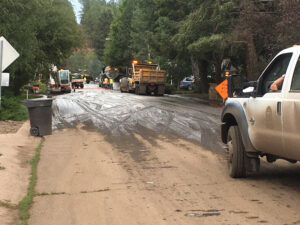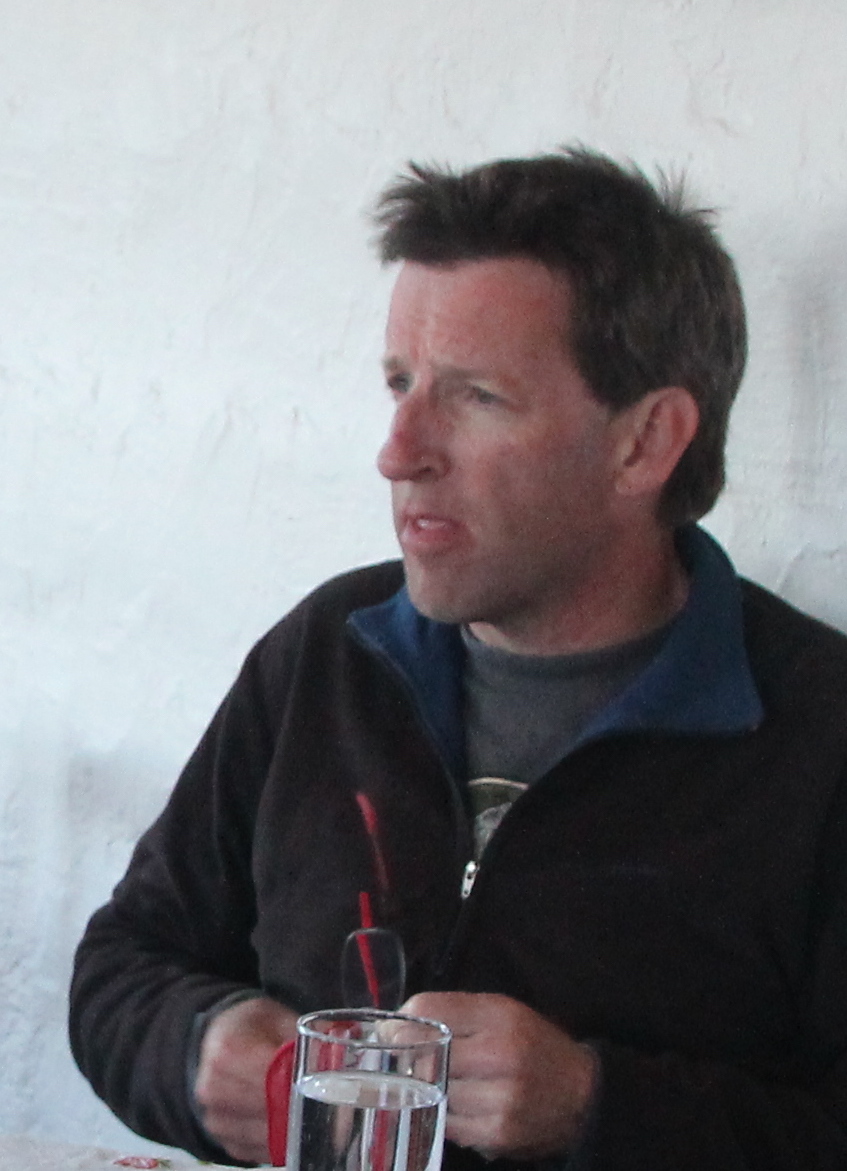It was almost on a whim that we decided, propelled by the latest bout of COVID claustrophobia, to spend a week this summer on the California coast. A day’s drive, no air travel, a rental within earshot of the surf: it was the easiest means we could manage for getting to a dramatically different ecosystem. At intervals I could not predict the fog rolled in and cast the pine-oak woods around us into shrouded mystery. Even though we’d come from an unusually wet period in Arizona my skin and lips felt different in the presence of all that airborne moisture.
One afternoon we took a drive up into Big Sur, where Highway 1 maintains a precarious toehold on the almost comically steep edge of the North American continent. We’d brought sandwiches and decided on a dinner stop at a spectacular beach, hidden from the road, that had been chewed out of the surrounding bluffs like a bite from a cookie. About ten flights of stairs down, we found a flat expanse of fine white sand strewn with the wrack of washed-up kelp.
The overcast hung low and wisps of fog rolled in. It wasn’t beach weather to us, if that terms means shorts and sandals and plunging into not-too-cold surf. But that didn’t stop the group of locals sitting near us. They’d come equipped with dogs, surfboards, coolers, long fishing rods. The older folks and some kids hung out on the beach, reading, talking, playing spikeball. A wet-suited gaggle of teens played on the water on surfboards. Adult or youth, they seemed of the place to me, the sort of people who might know when the fog could be expected to roll in or out, how to cast a saltwater line, how to read the incoming swell and know where to be on a surfboard at the right moment. As a short-time visitor, this knowledge all seemed occult to me, a desirable mystery.
It was the same reaction I often have to traveling, at least when I travel to places I like. I don’t go in much for “tourism,” the sorts of made-to-order, readily Instagrammable experiences that have become so prevalent and so lucrative in many much-visited places—including Flagstaff and environs. Nor am I a big fan of lounging on a beach reading novels—the stereotyped vacation leisure time that has little to do with the place itself. And so I’m often left being fascinated by the locals and how they experience the place, wondering what it’s like to be them, to be in sync with the place rather than a rank outsider. And when the place is as compelling as a craggy Big Sur beach, I instantly want to be one of those locals.
It’s irrational, I know, because I already live as a local in a beautiful place where I have gotten to know many of the rhythms of climate and weather, plant life and societal seasons. It’s a place I chose for many reasons, and each year I can feel the dividends of the time I’ve invested here growing. They’re paid in knowing the neighbors—human and otherwise—and in learning the weather patterns, albeit always incompletely. They’re paid in knowing when to plant and harvest garlic or pumpkins, and in the hot sauce I make from my pepper plants. They’re paid in knowing the geography and the ecological patterns, in knowing that this pivot point in the summer, as the rufous hummingbirds are migrating in, is right about the time that the noisy summer orioles migrate out to the south.
I’m aware that my own localism can’t compare in depth to that of people like my neighbor, who grew up in the same house that’s still in her family, or that of others whose people have lived here for many decades, or that of indigenous peoples whose people have been here for uncounted generations. Localism is a continuum, and if it’s in part a social practice, a getting-to-know people and peoples and the practices of place, it is also a personal matter that measures how much the place has become both accustomed and comfortable.
At a time when travel is so easy, I suspect I’m not alone in my fascination with new localisms in new places. Because localism is above all authentic, a genuine relationship with place.
It would be nice to suppose that it is a one-way street, that the only growing to be done in learning about place is positive, that there might be some ideal endpoint of knowing just about everything worth knowing about a place. But increasingly we know that this ideal can no longer prevail. Because we know that our place, and every place, is changing fast, and as it does what it means to be local has to change to keep pace. In Flagstaff being local increasingly means developing a precise, street-by-street or even yard-by-yard understanding of microhydrology and how the flow of water and mud changes with differing amounts of rainfall up on the mountain and the deposition of flow-changing sediment down below. Our learning about place has taken on a new urgency.
It is of course a measure of my naiveté about the place I was visiting that I could, during our beach dinner, hold the illusion that the rugged chunk of California coast I saw might not be subject to such fast and undesirable change. When the teens walked toward us on the beach, carrying their surfboards, we saw that a couple of them were holding stringers of freshly caught fish. We watched as they gathered around an upside-down surfboard on which they proceeded to gut their catch—a proceeding that, to judge by their meticulous attention, a couple of the younger kids hadn’t seen before.
This too seemed timeless: the local youth catching and prepping their dinner from the sea, a scene that has likely played out at that place for many hundreds of generations. I suppose I was acknowledging my status as a tourist, an outsider, by asking them what kind of fish they were—rockfish—but none of the other questions that my journalist’s mind could easily conjure, questions about how the place was changing, about how the young anglers viewed the dangerous future. It was vacation for us, and a successful harvest for them. For this evening, those other questions could wait.


